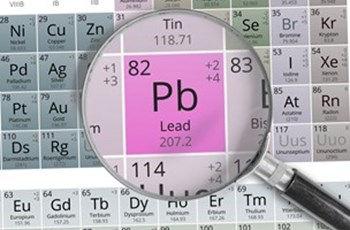
The lead exposure stories that have dominated U.S. news recently now have parents scrambling to determine if their children have been exposed.
Parents are right to be worried because lead affects children differently than adults, primarily due to its detrimental effects on a developing brain and nervous system. I covered 10 need-to-know facts about childhood lead poisoning in an earlier blog.
In most cases if lead is detected in a school or community, free lead screening events for young children (1-5 years old) are made available. Parents should definitely take advantage of these programs, but they should look closely at the results they're getting.
Caveat to LeadCare II Blood Screening
Nearly all free testing events use a CLIA-waived on-the-spot LeadCare II screening device. The process is to prick the finger and collect two drops of capillary blood for a rapid 3-minute analysis. Even though I support free lead testing for young children, there is a certain caveat with LeadCare II analysis that is worth mentioning: the minimum reportable value.
The minimum reportable value of the LeadCare II system is 3.3 µg/dL, most likely due to method constraints.[1] [2] If a result falls below 3.3 µg/dL then the analyzer display reads "low" and the result is reported as less than 3.3 µg/dL. The current blood lead level of concern in children is 5 µg/dL; it was 60 µg/dL in 1970, 30 µg/dL in 1985, 25 µg/dL in 1991, and 10 µg/dL in 2012.[3] The trend here is obvious, highlighting how our understanding of low level lead exposure and the damage it causes to a developing brain and nervous system has evolved over the years.
What's the problem with a minimum reportable blood lead value of 3.3 µg/dL?
For every 1 µg/dL increase in blood lead in children, there is on average a 1.37-point decrease in IQ (in the range of 0 to 10 µg/dL). |
The Fourth National Report on Human Exposure to Environmental Chemicals (2011-2012) prepared by the Centers for Disease Control and Prevention (CDC) showed that the average blood lead level for 1 to 5 year olds in the United States was 0.97 µg/dL, while the top 5% of children had blood lead levels over 2.91 µg/dL.[4] Many children testing in the top 5% for blood lead levels in the United States would be considered "low" using the LeadCare II screening device cutoff of 3.3 µg/dL. Several large scale studies have shown that there is a greater loss of IQ points when blood lead levels increase from 0 to 10 µg/dL than when it raises over 10 µg/dL.[5] [6] For every 1 µg/dL increase in blood lead in children, there is on average a 1.37-point decrease in IQ (in the range of 0 to 10 µg/dL).[5]
Studies by Miranda et al.[7] and Evans et al.[8] show how detrimental low level lead exposure can be. Even a blood lead level increase from 1 µg/dL to 2 µg/dL in children is damaging. Remember, there is no safe level of lead exposure in children, according to the guidelines issued by the CDC in 2012.
How do you determine blood lead less than 3.3 µg/dL?
The CDC, along with ZRT Laboratory, uses inductively coupled plasma mass spectrometry (ICP-MS) which is the gold standard for element analysis. Our blood spot lead assay, which can be completed at home, can accurately detect down to 0.22 µg/dL, and provides quantitative results that can be compared to those of a reference population and published childhood health guidelines. Other instrumentation can measure low blood lead levels, but do not match the sensitivity and specificity of ICP-MS.
In Conclusion
Free lead testing using the LeadCare II screening device may be useful as a quick check to rule out very high exposure, but in order to quantitatively determine the extent of a child’s exposure, more sophisticated and sensitive testing is required.
More about Elements Testing
- Blog: 10 Need-to-Know Facts About Lead Exposure
- Download: Comprehensive Elements Profile
- Download: Elements Testing Patient Handout
References
[1] http://www.lcultra.com/getmedia/7bed0248-3d0f-4ac0-8d51-235f75ba77e8/M-0029-Rev-01-LCUltra-vs-Reference-Method.pdf.aspx
[2] http://www.leadcare2.com/getmedia/73ac501b-35e3-4d74-b6a9-9e7fc51adef0/70-6551_Rev_07_User-s_Guide,_LeadCare_II_(PRINT)-1.pdf.aspx
[3] http://www.atsdr.cdc.gov/csem/csem.asp?csem=7&po=8
[4] Centers for Disease Control and Prevention. Fourth Report on Human Exposure to Environmental Chemicals, Updated Tables, (February, 2015). Atlanta, GA: U.S. Department of Health and Human Services, Centers for Disease Control and Prevention. http://www.cdc.gov/exposurereport/
[5] Canfield RL, Henderson CR, Cory-Slechta DA, Cox C, Jusko TA, Lanphear BP. Intellectual impairment in children with blood lead concentrations below 10 μg per deciliter. N Eng J Med. 2003;348:1517–26.
[6] Lanphear BP, Hornung R, Khoury J, Yolton K, Baghurst P, Bellinger DC, Canfield RL, Dietrich KN, Bornschein R, Greene T, Rothenberg SJ, Needleman HL, Schnaas L, Wasserman G, Graziano J, Roberts R. Low-level environmental lead exposure and children's intellectual function: an international pooled analysis. Environ Health Perspect. 2005 Jul;113(7):894-9.
[7] Miranda ML, Kim D, Galeano MA, Paul CJ, Hull AP, Morgan SP. The relationship between early childhood blood lead levels and performance on end-of-grade tests. Environ Health Perspect. 2007 Aug;115(8):1242-7.
http://europepmc.org/articles/PMC1940087
[8] Evens A, Hryhorczuk D, Lanphear BP, Rankin KM, Lewis DA, Forst L, Rosenberg D. The impact of low-level lead toxicity on school performance among children in the Chicago Public Schools: a population-based retrospective cohort study. Environ Health. 2015 Apr 7;14:21. http://ehjournal.biomedcentral.com/articles/10.1186/s12940-015-0008-9
